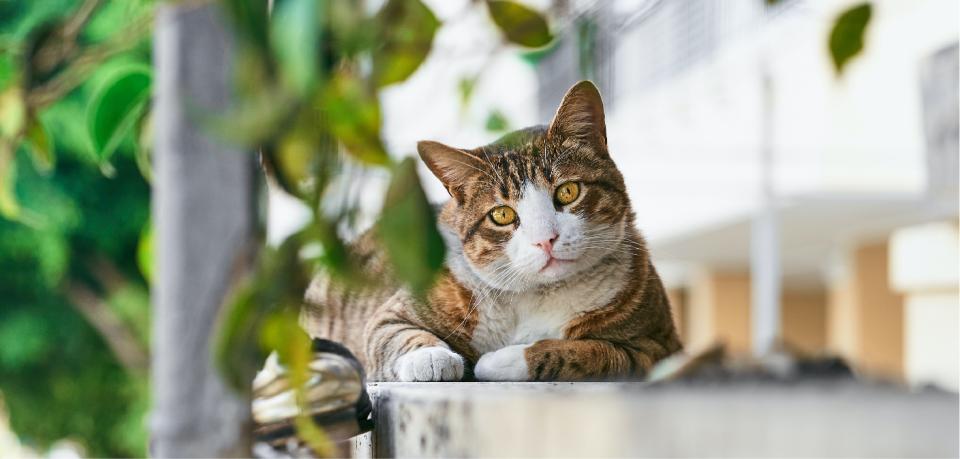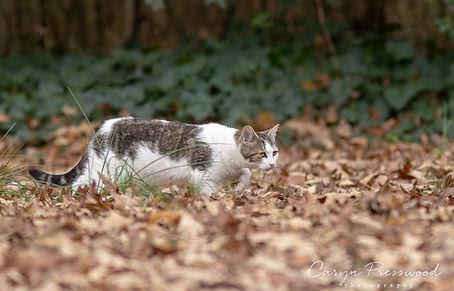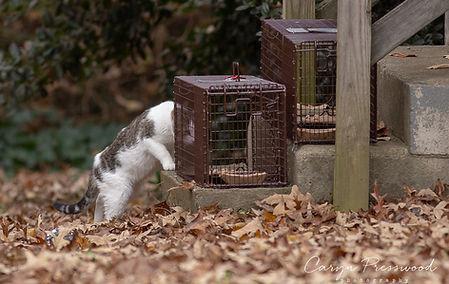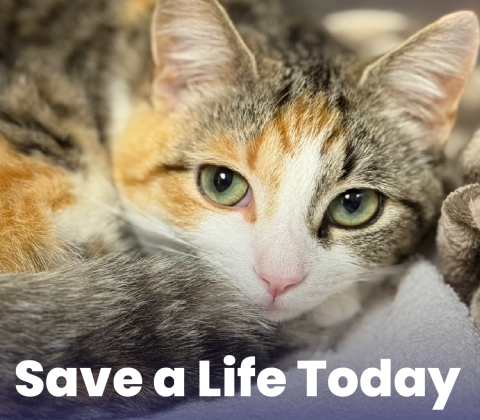Change language to español - ES

Let’s start with the most important thing before you go out to trap—a plan for vetting in place.
Please be sure to contact [email protected] to confirm our days of operation, drop-off times and availability. Please do not trap cats first and then go into SOS mode asking for emergency appointments. While that does work out at times, often clinics are closed or over-booked and a cat is just sitting in a trap stressed out. A stressed cat and a stressed human are a bad combo.
Before You Trap
Establish a feeding pattern. Our team has found that once cats are on a fixed feeding schedule for a week, it is much easier to trap. You feed the cat(s) at the same time and location every day to get them used to you and to coming to that location. The day before you plan to trap, withhold food for 24 hours. This is standard humane trapping protocol and will not hurt the cats. For a cat to enter a trap, he/she must be hungry. It is best to trap at night so they will be ready for surgery the following morning. Make sure the trap is clean after each new cat has been trapped to prevent the spread of disease.
SUPPLIES NEEDED
- A can of tuna, jack mackerel, or fried chicken (KFC, CFA, Bojangles)
- One feral trap for each cat you want to catch
- Thick newspaper or cardboard to line the bottom of each trap
- A sheet or large towel to cover the entire trap on all sides

Start Trapping
Set the trap by lining the trap with newspaper or cardboard. Set a trail of food from the entrance of the trap going all the way to the back of the trap where the trip plate is. Our team has had better success by placing 2 traps side by side facing the opposite direction. Quietly set the traps and leave the area. The cats are unlikely to enter the traps if you are nearby. If you are trapping in your yard, go inside. In public areas, traps should never be left unattended. Trapping a feral cat may take some time, possibly a few hours. Make sure the cat is securely trapped before you approach the trap, or you will frighten the cat away. If you are trapping more than one cat, after the first cat is trapped, simply cover the trap and move the trap to a location where other cats can’t see him. Cats will still enter the trap as long as they are hungry.

After Trapping
Make sure the entire trap is covered with a towel before moving it. It calms the cat, lessens the risk of injury, and prevents the spread of disease between cats at the clinic. Sometimes cats who have been previously fixed do get back in the trap. Always check trapped cats for an ear tip. If he has one, the cat has already been fixed, so release the cat and re-bait the trap.

Housing and Transport Before Surgery
Hold the cats overnight in their trap. Keep them dry and warm. Do not leave cats in traps exposed to extreme cold or heat. They can stay in a basement, garage, spare room, or covered porch. Use a box fan if it is too hot. Make sure your animals and wild animals cannot get near the cat in the trap. Place cardboard and newspaper underneath the trap to absorb any urine. Cats cannot eat any food 8 hours prior to surgery. Place cardboard and newspaper under the traps in your car.
Housing After Surgery
After surgery, carefully feed the cat by slipping food and water in non-breakable dishes under the door while watching the cat so he doesn’t get out. Trap dividers come very handy. Allow the cat to recover overnight in the same trap, still covered. Feed the cat as much as possible before releasing him. Males can be released the following morning or 24 hours after surgery. Females should be held 48 hours after surgery. Do not keep a cat in a cage longer than 24-48 hours unless directed to do so by the vet.
PLEASE DO NOT RELOCATE CATS.
Relocating cats will endanger their lives. Less than 50% of relocated cats survive the relocation. Releasing cats in a different area constitutes animal abandonment and is a crime in the state of Georgia. Release the cat in the same place you trapped him. Pull off the cover off the trap for a few minutes for the cat to reorient himself to his surroundings. Then release.









_200_49.png)



_200_175_75.JPEG)











